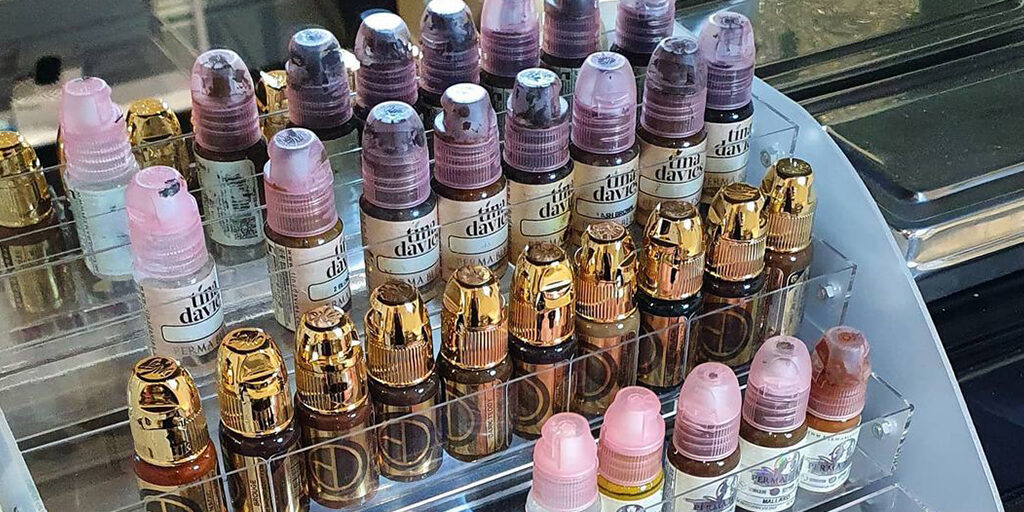Can you use regular tattoo ink for permanent makeup?
Permanent makeup pigments are specially designed to be safe to use on delicate skin, to produce natural results and to fade naturally over time. Although pigments and tattoo inks are similar, there are several reasons why tattoo ink should not be used in the PMU procedure.
Read on for the 3 main differences between tattoo ink and permanent makeup inks.
1. Ingredients
2. Concentration and formulation
3. Technique
Ingredients
Tattoo ink and PMU pigments do share some basic ingredients, but as semi permanent makeup falls under the umbrella of cosmetics, the ingredients used are strictly regulated to minimise the risk of allergic reaction.
It is also important to remember that the skin on the face is a lot more fragile when compared to other parts of the body – people can have permanent makeup applied to the delicate skin of their lips or their eyelids so the ingredients found in pigments need to account for this.
Most permanent cosmetic pigments are iron oxide based, an ingredient that is found in traditional cosmetic products. This ingredient is considered one of the safest and most stable colour agents - it is non-toxic and allergic reactions also are almost unheard of.
Concentration and formulation
Tattoo ink is a lot more concentrated than PMU pigments meaning the colours often appear bolder, brighter and sharper. Permanent makeup pigments have much smaller particles than tattoo ink meaning that healed results appear much softer and more natural – perfect for replicating brow hair strokes or subtle lip blush. This is also one of the main reasons why PMU pigments gradually fades over time, whereas traditional tattoo ink is more for permanent body art and difficult to remove.
Technique
How tattoo ink and pigments are applied to the skin are also different. Tattoo artists use either a coil or a rotary machine to deposit ink deep into the skin, leaving a permanent design.
PMU artists tend to only use a rotary machine as it uses thinner needles, allowing for more precision (or a hand tool in microblading.) This technique is a lot gentler and can help reduce trauma to the skin when working on delicate parts of the face. Pigment is also not placed as deep in comparison to the tattooing process, allowing results to fade naturally over time.
Due to the biological structure of the face, the sensitivity of the skin and desired results, it is paramount that permanent makeup artists don’t use regular tattoo ink for permanent makeup - they should only use permanent makeup pigments in their treatments! Not only are pigments safer to use, but they are carefully designed and formulated to allow artists to create the most natural-looking results that will compliment the client’s skin tone.
Here at Killer Beauty, we have one of the best ranges of permanent makeup inks and pigments for those working in the permanent makeup industry from well-known brands such as Perma Blend, Pure Colors and Li Pigments. Shop online now.



